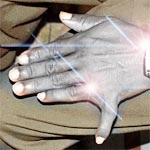Dear Doctor,
I know you have had many questions on hair multiplication over the years (but here is another one).
When/if hair cloning becomes commercially viable will it regenerate old, dead hair follices and make them DHT resistant so they continuously grow or will it create new follicles? I imagine it would be better to regenerate old follicles so that the hair grows in the same direction. I know that intercytex have managed to grow hair on a high proportion of their volunteers in phase 2 of their product, but was wondering whether you have any inside knowledge of whether they are creating new follicles or creating new ones. Also, what do you think of their progress? Many thanks
Some people think that there is a missing protein, and that when present, it will kick in hair growth from some residual hair elements that are in the scalp. If a missing protein is the answer, then the growth cycle may be dependent upon that molecule (see Scientists Find Hair Growth Molecule in Mice). There are many approaches to creating hair — some with existing hair follicles that are weak, from dead hair follicles that may not really be dead, or from stem cells which may actually turn into a hair organ/follicle.
I do not really keep up with Intercytex, but you can go to their site and get an update from their various news releases. Just as most press releases, they are written by a public relations person to hype the product or company, so take what you read with a grain of salt.


 Nizoral is a good shampoo, but it won’t do anything to regrow your hair. I’ve addressed the side effects questions many, many times before on the blog — the most vocal are the ones with complaints. There are hundreds of thousands of men that use the drug that don’t spend all day on forums discussing it in a positive or negative way. Also, the complaints are unsubstantiated — I could say that Propecia grew a 6th finger on my left hand and made my skin turn silver, and how are you going to disprove that? The FDA published that the side effects occur in less than 2% of men.
Nizoral is a good shampoo, but it won’t do anything to regrow your hair. I’ve addressed the side effects questions many, many times before on the blog — the most vocal are the ones with complaints. There are hundreds of thousands of men that use the drug that don’t spend all day on forums discussing it in a positive or negative way. Also, the complaints are unsubstantiated — I could say that Propecia grew a 6th finger on my left hand and made my skin turn silver, and how are you going to disprove that? The FDA published that the side effects occur in less than 2% of men.